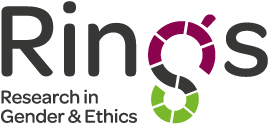Five things I learned from the RinGs webinar on gender and health systems
This blog explores some of the key themes that were discussed during a recent webinar on the role of gender in health systems.
Kate Hawkins (Director of Pamoja Communications)
This week I was lucky to attend the Research in Gender and Ethics (RinGs) webinar where we learned more from colleagues who received a research grant as part of the programme. The presentations were split into three themes: human resources for health; care seeking and access to services; and governance. Here are some of the take-home messages that stood out for me:
1. Research and changes in the health system are needed to tackle the pervasive challenges that women face due to their childcare responsibilities.
We heard that in Cambodia life history research uncovered that work/life balance was a struggle for the women who were interviewed. Juggling domestic chores and caring for children and the elderly with paid employment was perceived as a real barrier to career progression within the health sector. While in Zimbabwe health care worker deployment across the country either led to the separation of partners and families or women tended to resign from their healthcare positions to follow their husband. As a result, they lost their accumulated years of service, which is important in terms of promotion and training opportunities. Alternatively, women chose not to take rural postings (important in terms of training opportunities, exposure to on the job learning, and the opportunity for overseas travel) because they prioritised the education of their children over work.
2. An intersectionality analysis can uncover new and unexpected findings when it comes to care pathways.
An analysis of eye-care in the Indian Sunderbans discovered that when gender crosscuts with age, elderly women are more likely to develop visual impairments. The study also found that non-poor women are more likely to develop visual impairments than poor men, highlighting that increased income is not necessarily a protective factor against visual impairment when gender inequities are prevalent. Without an intersectional lens, this nuance would have been missed. Given the multi-layered nature of vulnerability, a resilient health system needs to take an intersectional approach to ensure effective and gender equitable health care.
3. Gender analysis can illuminate significant and yet over-looked policy conundrums that decision makers urgently need to grapple with.
For example, a study of unpaid family care giving (the bedrock of the health system) to elderly people in China uncovered that care patterns are changing. Where once this was the responsibility of sons and daughters-in-law in urban areas, the responsibility is increasingly falling on daughters. This analysis also uncovered that 26.8% of the elderly did not receive any care from their children in the last week. Due to the transition away from a traditional filial piety system, social welfare systems, such as long-term care insurance and professional care institutions in China should be strengthened so that the elderly can receive the care they need. In Uganda we heard that the work of community health workers is profoundly gendered due to social norms – with women taking on roles related to child and maternal health and men doing more physical labour, such as drainage ditch digging. This needs to be considered when community health worker policies are put in place. For example, men tended to respond to emergencies because they have greater access to transport (cycles and motor bikes), but also because women using these modes of transport was considered unacceptable. Without challenging these norms and the unequal distribution of material resources, women may not be able to fulfil a vital part of their role as a community health worker.
4. There’s a lot of talk about the involvement of men in sexual and reproductive health services and yet policy and practice to support this process is often weak.
In Enugu, Nigeria, it was found that very few men accompanied their wives to antenatal care (in the context of the prevention of parent to child transmission of HIV). Gendered community norms and expectations meant that going to antenatal care was perceived as a woman’s responsibility despite male dominance in household and reproductive health decision making. Health services reinforced these perceptions – men who did attend were ridiculed and the way the services were delivered meant that they did not feel welcome or needed. A review of policies related to parent to child transmission of HIV in Tanzaniademonstrated that most strategy documents could be categorized as gender sensitive. That is, the documents’ content indicates awareness of gender concerns; however, there was a lack of corresponding remedial measures. Health facilities’ organizational processes and practices paid little attention to holistic integration of gender in the delivery of these services.
5. When it is done well the integration of gender into health systems policy can have an impact.
We heard how the creation and implementation of the National Health Insurance Fund prepaid insurance card for pregnant women in Pangani District, Tanzania involved men from the outset. Men were involved during design, inauguration, registration, and sensitization at community and facility levels. Facilities encouraged women to bring their male partners to appointments. As a result, men encouraged their female partners to go to the facility, as they knew services were free/already covered and they now take children to the hospital for growth monitoring and when they are sick.

